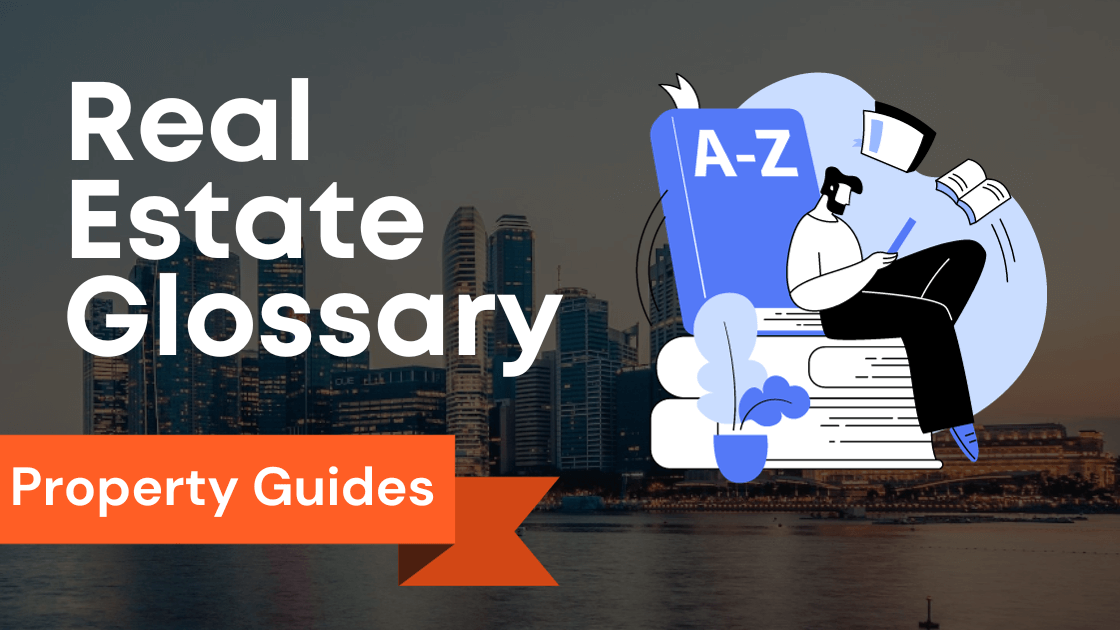
Do you want to understand how CPF contributions work for you?
In this blog, we will break down the essentials in simple terms, from who is considered self-employed to calculating contributions and maximizing benefits, we’ve got you covered.
Get ready to take control of your CPF and secure a better future for yourself.
Key Takeaways
| Key Takeaways | Explanation |
|---|---|
| Self-employed definition | Self-employed individuals in Singapore earn a net trade income of more than $6,000 per year from any trade, business, profession, or vocation. |
| Compulsory CPF contribution rate | Self-employed individuals must contribute 8% of their net trade income to their MediSave account, with a cap of $37,740 per year. |
| Differences in employee contributions | Unlike employees, self-employed individuals make the full CPF contribution themselves but have more flexibility in the amount and timing of contributions. |
| Importance of CPF contribution for retirement | Contributing to CPF is crucial for self-employed individuals to save for retirement and ensure sufficient savings for old age. |
| Retirement planning with CPF | Self-employed individuals can make voluntary contributions to their CPF accounts, use CPF savings for investments, and earn higher interest rates. |
| Benefits of regular CPF contributions | Regular CPF contributions provide tax relief, protection against inflation, and funds for housing, healthcare, and education expenses. |
| Types and uses of CPF accounts for self-employed | Self-employed individuals can contribute to the Ordinary Account, Special Account, and MediSave Account for different financial needs and goals. |
| MediSave Account for healthcare expenses | The MediSave Account is used to pay for healthcare expenses and insurance premiums and can be used by self-employed individuals and their dependents. |
| Calculating and making voluntary CPF contributions | Self-employed individuals can use the CPF calculator to estimate contributions and make them through cash, cheque, or GIRO. |
| Maximizing tax relief through CPF contributions | Self-employed individuals can maximize tax relief by making maximum allowable contributions and top-ups to family members’ CPF accounts. |
| Limits and Considerations for CPF Contributions | Self-employed individuals have contribution limits based on age and income and should consider business expenses when calculating net trade income. |
| CPF contributions’ tax implications | CPF contributions are generally tax-deductible and can help reduce taxable income, but restrictions and requirements apply. |
| Using the CPF Self-Employed MediSave Contribution Calculator | The calculator helps self-employed individuals estimate and manage their MediSave contributions effectively to optimize CPF benefits. |
| Managing CPF contributions for changing status | When changing employment status, self-employed individuals need to apply for CPF contributions and manage their CPF accounts accordingly. |
| CPF contribution during unemployment | Self-employed individuals do not have to make CPF contributions during periods of unemployment but should resume contributions when working again. |
| Leveraging CPF contributions for healthcare | CPF contributions can be used to pay for eligible healthcare expenses, and self-employed individuals should maximize contributions for healthcare needs. |
| Balancing CPF contributions and business expenses | Self-employed individuals should deduct allowable business expenses and manage CPF contributions to ensure compliance and maximize tax benefits. |
| Keeping records for tax and CPF purposes | Detailed records of income, expenses, and CPF contributions should be kept for at least five years to meet tax and CPF obligations. |
| Definition of CPF and self-employed individual | CPF is a savings and insurance scheme in Singapore, and self-employed individuals are those who work for themselves and contribute to CPF. |
| Calculation of CPF contributions for self-employed | CPF contributions for self-employed individuals are based on a percentage of their net trade income, with an annual contribution cap. |
Understanding CPF Contribution for Self-Employed Persons

Who is considered a self-employed person by CPF?
In Singapore, you are considered self-employed if you earn a net trade income of more than $6,000 per year from any trade, business, profession, or vocation.
This includes sole proprietors, partners in partnerships, and persons who work for themselves.
It does not include persons who are salaried employees or who work for an employer.
What is the compulsory CPF contribution rate for self-employed persons?
As a self-employed person, you are required to contribute to your MediSave account, which is used to pay for your healthcare expenses.
The contribution rate is 8% of your net trade income, subject to a cap of $37,740 per year.
This cap includes both mandatory and voluntary contributions.
For example, if your net trade income is $50,000 per year, your MediSave contribution would be $3,780 (8% of $50,000), which is the maximum contribution allowed for self-employed persons.
How does CPF contribution for self-employed persons differ from employees?
Employees in Singapore have their CPF contributions deducted automatically from their salary, and their employer also contributes to their CPF accounts.
The contribution rates for employees are higher than for self-employed persons, but the employee and employer share the contribution.
Self-employed persons have to make the full contribution themselves, but they also have more flexibility in terms of the amount and timing of their contributions.
Importance of Self-Employed Contribution For Retirement Income
Why is it important for self-employed persons to contribute to CPF?
Contributing to CPF is an important way for self-employed persons to save for their retirement.
CPF provides a reliable source of retirement income for Singaporeans, and the earlier you start contributing, the more you will have in your account when you retire.
Self-employed persons who do not contribute may find themselves with insufficient savings to support themselves in their old age.
How can self-employed persons plan for their retirement using CPF?
As a self-employed person, you can use CPF to save for your retirement by making voluntary contributions to your Ordinary or Special Account.
These accounts earn interest at a rate of 2.
5% to 4% per annum, which is higher than most savings accounts in Singapore.
You can also use your CPF savings to invest in various investment instruments offered by CPF, such as the CPF Investment Scheme (CPFIS) or the Retirement Sum Scheme (RSS).
What are the benefits of contributing regularly to CPF as a self-employed person?
There are several benefits to contributing regularly to CPF as a self-employed person.
First, you can enjoy tax relief on your contributions, which can help to lower your overall tax liability.
Second, your CPF savings are protected against inflation, which means that they will retain their value over time.
Third, your CPF savings can be used to pay for various expenses, such as housing, healthcare, and your child’s education.
Exploring the Different CPF Accounts and Their Benefits

What are the different CPF accounts available for self-employed persons?
As a self-employed person, you can contribute to three different CPF accounts: the Ordinary Account (OA), the Special Account (SA), and the MediSave Account (MA).
The OA is used for housing, education, and investment, while the SA is used for retirement and long-term savings.
The MA is used for healthcare expenses.
What are the benefits and uses of Ordinary and Special Accounts?
The Ordinary Account (OA) earns interest at a rate of 2.
5% per annum, and can be used for various purposes, such as housing, education, and investment.
You can use your OA savings to purchase a home, pay for your child’s education, or invest in stocks, bonds, or unit trusts.
The Special Account (SA) earns interest at a rate of 4% per annum and is used for retirement and long-term savings.
You can use your SA savings to build up your retirement nest egg or to invest in various CPF investment instruments.
How can the Medisave Account be used by self-employed persons?
The Medisave Account (MA) is used to pay for healthcare expenses, such as hospitalization, outpatient treatment, and medical insurance premiums.
As a self-employed person, you can use your MA savings to pay for your own healthcare expenses and those of your spouse, children, and parents.
You can also use your MA savings to top up your Basic Healthcare Sum (BHS), which is the minimum amount of savings required for certain healthcare benefits.
May also Calculate and Make Voluntary CPF Contributions
How can self-employed persons calculate their CPF contributions?
To calculate your CPF contributions as a self-employed person, you need to know your net trade income for the preceding year.
You can use the CPF Board’s online calculator to estimate your mandatory and voluntary contributions and to determine the maximum amount you can contribute to your MediSave account.
What are the options available for making voluntary CPF contributions?
As a self-employed person, you can make voluntary contributions to your CPF accounts by cash, cheque, or GIRO.
You can make a lump sum contribution or set up a standing instruction to make regular contributions on a monthly or quarterly basis.
What are the tax benefits of making voluntary CPF contributions?
Self-employed persons can enjoy tax relief on their MediSave, Ordinary, and Special Accounts contributions, up to certain limits.
The tax relief is deducted from your taxable income, which can help to lower your overall tax liability.
You can also make voluntary top-ups to your parents’ or spouse’s CPF accounts to enjoy tax relief.
Maximizing Tax Relief through CPF Contributions

How can self-employed persons maximize their tax relief through CPF contributions?
Self-employed persons can maximize their tax relief through CPF contributions by making the maximum allowable contributions to their MediSave, Ordinary, and Special Accounts.
They can also make voluntary top-ups to their parent’s or spouses’ CPF accounts to enjoy additional tax relief.
However, it is important to note that the total amount of tax relief you can claim is subject to a cap.
What are the limits and considerations for CPF contributions as a self-employed person?
Self-employed persons are subject to certain limits on their CPF contributions based on their age and income.
For example, the maximum amount of MediSave contributions for persons over 55 years old is $7,490 per year.
There are also considerations related to allowable business expenses, which can affect your net trade income and your CPF contributions.
What are the tax implications of CPF contributions for self-employed persons?
The tax implications of CPF contributions for self-employed persons depend on their income and tax bracket.
Generally, CPF contributions are tax-deductible, which means that they can be used to reduce your taxable income and lower your overall tax liability.
However, you should be aware of certain restrictions and requirements related to CPF contributions.
CPF’s Self-Employed MediSave Contribution Calculator: A Step-by-Step Guide
What is the CPF Self-Employed MediSave Contribution Calculator?
The CPF Self-Employed MediSave Contribution Calculator is an online tool provided by CPF to help self-employed persons calculate their MediSave contributions and determine the maximum amount they can contribute.
The calculator takes into account your age, net trade income, and other factors that affect your contribution.
How can self-employed persons use the calculator to determine their MediSave contributions?
To use the CPF Self-Employed MediSave Contribution Calculator, you need to enter your age, net trade income, and other relevant information.
The calculator will then estimate your mandatory and voluntary contributions to your MediSave account and show you the maximum amount you can contribute for the year.
What are the benefits of using the calculator for self-employed MediSave contributions?
The CPF Self-Employed MediSave Contribution Calculator can help self-employed persons to plan and manage their MediSave contributions more effectively.
By using the calculator, you can avoid underpaying or overpaying your MediSave contributions and ensure that you are making the most of your CPF benefits.
Managing CPF Contributions and Accounts for Employee Contribution Year Preceding

What is the contribution year preceding?
The contribution year preceding is the year preceding the year in which the CPF contribution is payable.
For example, 2021 CPF contributions are payable in 2022, and the contribution year preceding is 2021.
How do I manage my CPF contributions when I change my employment status?
If you become self-employed and earn an annual net trade income of more than $6,000, you are required to make mandatory contributions to your own CPF accounts under the Self-Employed Scheme.
If you’re an employee and become self-employed, you must apply to pay your CPF contributions.
Within two months of leaving or changing your employment status, you should also apply to make CPF contributions under the Self-Employed Scheme.
What happens to my CPF account when I stop working?
When you stop working, your CPF account will continue to earn interest.
You should consider transferring your CPF savings to your Ordinary Account (OA) and Special Account (SA) if you’re between 55-65 years old and have less than the Basic Retirement Sum (BRS) in your Retirement Account (RA).
If you’re 65 years old and have less than the Full Retirement Sum (FRS) in your RA, you can also transfer the balance from your OA and SA to your RA to top up the FRS.
Self-Employed Scheme: Contribution Obligations, Year of Assessment, and Benefits
What are my contribution obligations under the Self-Employed Scheme?
Self-employed individuals in Singapore are required to contribute 9% of their net trade income to their MediSave account.
If you’re between 35 and 45 years old, your monthly contributions are capped at $800, while those aged 45 and above have a monthly salary ceiling of $1,200.
You must also make monthly contributions to your Ordinary Account (OA) and Special Account (SA) based on a percentage of your net trade income up to the CPF Annual Limit.
Employed individuals also have CPF contributions from their employers, but self-employed individuals must pay their contributions on their own declaration at the end of the year.
What is the year of assessment for self-employed individuals?
The year of assessment for self-employed individuals is the same as for all taxpayers in Singapore, which is the calendar year.
What benefits can I receive by contributing to CPF as a self-employed individual?
Self-employed individuals who contribute to the CPF can benefit from the various schemes and programs offered by the CPF Board.
These include the Basic Healthcare Sum, which helps you cover the cost of healthcare expenses, and the MediShield Life insurance scheme, which provides affordable insurance coverage for all Singaporeans and permanent residents.
CPF contributions also provide tax relief and enable you to build up savings for your retirement.
Ensuring a Stable Income: Self-Employed Contributions in Uncertain Times

How can I ensure a stable income as a self-employed individual?
As a self-employed individual, your income is likely to fluctuate – making it important to plan and budget for both cyclical changes and unexpected events.
Building an emergency fund can help to safeguard your financial security during periods of low income.
You should also consider keeping your expenses low and prioritising essential costs.
Investing in yourself through education and skills training can help to keep you competitive and increase your earning potential.
What should I do if I experience a period of low income?
If you experience a period of low income, you may be eligible to reduce your CPF contributions by submitting a request to the CPF Board.
However, you should only do this if you are certain that your gross trade income will be below the Minimum Sum of Assessor Income ($6,000 for the year 2021).
This will help you manage your cash flow for a short period but may involve higher contributions in subsequent years to catch up.
You should also consider speaking to a financial advisor for advice.
What happens to my CPF contributions during periods of unemployment?
If you’re self-employed and experience a period of unemployment, you will not have to make monthly CPF contributions.
However, you should continue to track your earnings and make any necessary top-ups to your CPF accounts to ensure that you meet your obligations for the year.
When you start working again, you must begin making payments to your CPF accounts as required.
Leveraging CPF Contributions for Healthcare Expenses and MediSave Account
Can I use my CPF contributions to pay for healthcare expenses?
You can use your CPF contributions to pay for eligible healthcare expenses, including hospitalization, day surgery, and certain outpatient treatments.
The amount of available funds will depend on your MediSave balance.
What is a MediSave account, and how does it work?
A MediSave account is a personal savings account used to pay for approved healthcare expenses in Singapore.
You can contribute to your account through your CPF contributions, and the account earns interest at a competitive rate.
You can also utilize your MediSave funds to purchase insurance schemes such as the ElderShield scheme and CareShield Life.
How can I make the most of my CPF contributions for healthcare expenses?
You can make the most of your CPF contributions for healthcare expenses by ensuring that you contribute to your MediSave account consistently and by taking advantage of the various insurance and healthcare schemes available to you through the CPF Board.
Investing in your health and well-being through regular check-ups and preventative care can also help to reduce the incidence of costly medical emergencies.
Balancing CPF Contributions and Allowable Business Expenses

What business expenses can I deduct from my taxable income?
As a self-employed individual, you can deduct certain business expenses, including rent, utilities, and office supplies, from your taxable income.
You may also be eligible to claim capital allowances for assets used in your business, such as vehicles and equipment.
However, you cannot claim personal expenses as business expenses.
How do I balance my CPF contributions with my allowable business expenses?
You can balance your CPF contributions with your allowable business expenses by keeping accurate records of your income, expenses, and CPF contributions.
You should also evaluate your expenses regularly to ensure that they are necessary and cost-effective.
If you’re uncertain how to balance your obligations, you can ask a financial advisor or tax specialist for advice.
What records do I need to keep for tax and CPF purposes?
You should keep detailed records of your income, expenses, and CPF contributions for a minimum of five years.
This will help HMRC assess your income tax liability accurately and ensure that you comply with your CPF obligations as a self-employed individual.
What is CPF and Who is Considered a Self-Employed Individual?
Definition of CPF
CPF is a savings and insurance scheme that aims to help Singaporeans build a secure future in areas such as retirement planning, healthcare financing, and home ownership.
CPF contributions are paid by employees, employers, and self-employed individuals, and these funds are channeled into three accounts, namely, the Ordinary Account (OA), Special Account (SA), and Medisave Account (MA).
Definition of Self-Employed Individual
A self-employed individual is someone who works for themselves and does not earn regular income from an employer.
Self-employed individuals in Singapore are classified under the Self-Employed Person (SEP) scheme and must contribute to their CPF accounts regularly.
How are CPF Contributions Calculated for Self-Employed Individuals?
Calculation of Contributions
CPF contributions for self-employed individuals are calculated based on a percentage of their net trade income.
The net trade income is computed by taking the gross business income minus all allowable business expenses.
The CPF contribution rate for self-employed individuals is currently at 37%, comprising of the employee and employer portions.
Annual Contribution
The annual contribution cap for self-employed individuals is set at $37,740, which is computed based on 37% of the annual net trade income ceiling of $102,000.
Compulsory Self-Employed CPF Contribution
Since January 2016, under the Compulsory Self-Employed CPF Contribution (CSECC) scheme, self-employed individuals aged below 65 are required to contribute a minimum sum of $1,520 annually to their Medisave Account to safeguard their future medical expenses.
What are the CPF Contribution Schemes Available for Self-Employed Individuals?

Voluntary CPF Contributions
Self-employed individuals can choose to make voluntary CPF contributions, which can enhance their CPF savings and allow them to enjoy attractive interest rates.
You may choose to make a voluntary top-up to your own, spouses, or parents’ CPF accounts and enjoy tax relief of up to $7,000 annually.
Contribution Payable
The contribution payable is the amount that the self-employed individual must pay to their CPF accounts.
CPF contributions are payable in one installment and can be made at any time within the year.
Contribution Schemes
Contributions made by self-employed individuals are classified under the SAVER or Basic Healthcare Sum (BHS) schemes.
The SAVER scheme allows self-employed individuals aged 55 years and below to contribute less than the mandatory amount and receive a pro-rated sum of CPF LIFE payouts later in life.
The BHS scheme allows self-employed individuals to use their Medisave Account for approved health expenses.
How Does CPF Contribution Affect the Income Tax-Filing Process?
CPF Contributions and the Income Tax-Filing Process
CPF contributions for self-employed individuals are deductible from the assessable income and can be used to reduce the tax payable.
As such, it is essential to keep track of your CPF contributions and ensure that they are reflected accurately in your tax returns.
Excess Contribution
In the event that your CPF contributions exceed the annual contribution cap, the excess contribution may be refunded back to you.
However, any interest earned on the excess contributions will be forfeited to the CPF Board.
Self-Employed Person’s Income
For income tax purposes, the self-employed person’s income is computed after deducting the mandatory CPF contributions.
However, voluntary contributions and top-ups are not deductible.
What are the Benefits of Maximizing CPF Contributions as a Self-Employed Individual?
Maximizing CPF Contributions and Benefits
Maximizing CPF contributions as a self-employed individual can contribute significantly to your retirement savings while also providing insurance coverage for healthcare and housing.
CPF contributions also earn attractive interest rates, which can help grow your savings over time.
Tips for a Financially Secure Future
As a self-employed individual, it is crucial to plan your finances for a secure future.
You can do this by keeping track of your income and expenses, setting aside funds for emergency situations, and seeking professional financial advice if you encounter any financial difficulties.
Planning for Education and CPF Contributions: Securing Your Child’s Future
You may also choose to use your CPF savings to finance your children’s education.
The CPF Education Scheme allows you to make use of your OA and SA savings to pay for tuition fees and other approved educational expenses.
By planning for your child’s education early, you can secure their financial future and provide them with opportunities for success.
Managing your CPF contributions as a self-employed individual may seem challenging at first, but it is essential to take a proactive approach to ensure a financially secure future.
With the various CPF contribution schemes and benefits available, you can grow your savings over time and enjoy attractive interest rates while safeguarding your healthcare, housing, and retirement needs.
Conclusion
In conclusion, understanding CPF contributions is crucial for self-employed individuals in Singapore to secure a better future.
By contributing to your CPF accounts, you can save for retirement, cover healthcare expenses, and enjoy tax benefits.
As a self-employed person, you have the flexibility to make voluntary contributions and manage your CPF accounts according to your needs.
To ensure a stable income, it’s important to plan for cyclical changes and unexpected events, such as building an emergency fund and investing in yourself through education and skills training.
You can also leverage your CPF contributions to pay for healthcare expenses through your MediSave account, which provides coverage for hospitalization, outpatient treatments, and insurance schemes.
Balancing your CPF contributions with allowable business expenses is essential.
Keep accurate records of your income, expenses, and CPF contributions, and consult with financial advisors or tax specialists for guidance.
If you found this blog helpful, be sure to check out our other articles on CPF and self-employment in Singapore.
Take control of your CPF and secure a better future for yourself.
Frequently Asked Questions
What is CPF for Self-Employed?
CPF for Self-Employed is a compulsory savings scheme in Singapore that helps self-employed individuals to build up their retirement fund.
The scheme is mandatory for all self-employed professionals, freelancers, and sole proprietors who are aged 35 and above and earn a yearly net trade income of more than S$6,000.
Who needs to contribute to CPF for the Self-Employed?
All self-employed professionals, freelancers, and sole proprietors who have crossed the age of 35 and earn a yearly net trade income of more than S$6,000 are required to contribute to CPF for Self-Employed.
Can CPF contributions for Self-Employed be used for investment purposes?
Generally, CPF contributions for Self-Employed cannot be used for investment purposes.
However, if you are planning to use the money for investment purposes, you can appeal to CPF Board (CPFB) to withdraw it for investment, provided you meet the CPFB’s requirements.
How and when should I make a contribution to CPF for Self-Employed?
You can make your contributions to CPF for Self-Employed either on a monthly or an annual basis.
If you choose to contribute on a monthly basis, you need to pay the sum by the 14th of the following month.
Alternatively, if you wish to make an annual contribution, you need to do so within the first 60 days of the year.
What are the consequences of not contributing to CPF for the Self-Employed?
If you fail to make CPF contributions for Self-Employed on time, you will be charged with a late payment interest of 1.
5% per month of the unpaid amount until the date the contributions are received.
In case of subsequent offenses, liquidated damages may also be imposed on you.
How can I compute the contribution for CPF for Self-Employed?
The CPF contribution for Self-Employed is computed based on your net trade income for the year, which is the revenue of your business minus the allowable trade expenses.
The contribution rate for CPF for Self-Employed is 9%, which is applicable to your net trade income up to an annual limit of S$37,740.
Can I still contribute to CPF for Self-Employed if I have trade losses?
If you have trade losses, you are still eligible to make a voluntary CPF contribution for Self-Employed, subject to a cap of S$37,740 per year.
However, you will not be able to make any compulsory contributions if you have no income.
Can I use my CPF Ordinary Account for investment purposes?
Yes, you can use your CPF Ordinary Account for investment purposes.
However, you should keep in mind that the investment products available to you through CPF are limited and you need to exercise caution when investing.
What are the benefits of contributing to CPF for the Self-Employed?
Contributing to CPF for Self-Employed helps you to save up for your retirement, ensure that you have enough funds to conduct your business operations, and also entitle you to various benefits provided by the government.
These benefits include various tax reliefs, access to different government services, etc.
How does CPF for Self-Employed help in the growth of my business?
The CPF for Self-Employed helps in the growth of your business by providing you with a safety net, ensuring that you have enough funds to conduct your business operations, and also by providing you with additional contributions on top of your own, to help your business survive during times of hardship.
It also helps improve your creditworthiness, which in turn helps you secure loans from banks and other financial institutions.




















